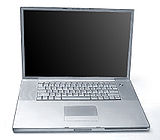A shout out to Brent Simmons regarding his take on code formatting style.
Personally I tend to agree with Brent that opening braces at the end of lines is easier to read. Perhaps this comes from the fact that he and I both spent lots of time writing UserTalk code in Frontier’s outliner.
Typically code written in the outliner didn’t have curly braces at all – code blocks were defined by indentation, though occasionally we’d use braces on a single line:
Multi-line example:
|
1 2 3 4 |
if myNumber > 100 doSomething () else doSomethingElse () |
Single-line example:
|
1 |
if myNumber > 100 {doSomething ()} else {doSomethingElse ()} |
But when you take the same code and copy/paste it from the outliner into a text document (or save the script to a text file), you get this from the multi-line example above:
|
1 2 3 4 |
if myNumber > 100 { doSomething ()} else { doSomethingElse ()} |
Note the left-brace at the end of the first and third line. (The same text could be pasted back into the outliner to get the braces-free, indented version.)
Another reason I like the brace at the end of the line is that when you collapse a block in Xcode, the whole block lands on a single line in the editor, instead of on two lines. Personally I find this a lot less distracting than having two lines for every collapsed block, and being an outliner guy, I use expand/collapse in Xcode quite a bit.
Anyway, just a thought…
Ps. I totally agree with Brent that consistency is more important than the specific style rules.

 I considered using rsync to mirror my files onto either my Synology NAS, or my G5, but that would have made an assumption that I actually knew what files I might need in the future. Instead I decided to create a bootable disk image (dmg format). If I ever need to restore this machine I can, and if I just want to find a file, I can mount the disk image and navigate it just like the contents of the original disk.
I considered using rsync to mirror my files onto either my Synology NAS, or my G5, but that would have made an assumption that I actually knew what files I might need in the future. Instead I decided to create a bootable disk image (dmg format). If I ever need to restore this machine I can, and if I just want to find a file, I can mount the disk image and navigate it just like the contents of the original disk.
2 Comments